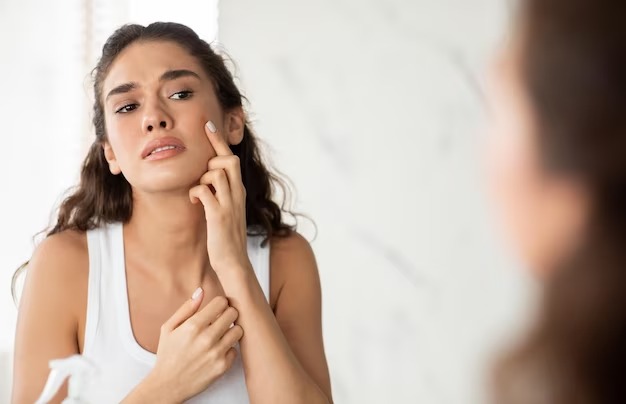INTRODUCTION:-
This review focuses on weak scars, the most common type of acne scar. We briefly discuss the cellular consequences that lead to scar formation and the initial evaluation of patients with acne scars.
We then discuss an algorithmic approach to treating acne scarring based the classification of scars into erythematous and atrophic types. On the classification of scars into erythematous and atrophic types. Finally, we discuss future treatment of acne scars and ongoing clinical trials. Acne vulgaris is a common problem that affects 80 percent of people ages 11 to 30. Monalisa Wellness Center offers the greatest dermatologists and the best skin clinic.
BEFORE AND AFTER TREATMENT OF ACNE SCARS:-
To give this patient the best results, Monalisa Wellness Centre dermatologists used more than one treatment to lessen the appearance of acne scars.
What happens during an acne scar consultation with a dermatologist?
Throughout this appointment, your dermatologist will:
- Look closely at your skin, focusing on any scars: Effectively treating scars requires knowing the types of acne scars on your skin and where they appear. For example, to get the best results, ice pick scars require different treatment than rolling scars.
- Ask you some questions: These questions help your dermatologist understand how the scars affect your life, the results you expect, and more.
KEY SUMMARY POINTS:
Acne scarring can affect any patient with acne, regardless of severity, and place a considerable psychological and psychosocial burden on their lives.
Recent studies have shed new light on the pathophysiology of acne and acne scarring, confirming the role of family history and the importance of early and sustained treatment of inflammation for acne scar prevention in all patients.
For many years we have relied on invasive, physical treatments for acne scars but we now have topical anti-inflammatory treatments that can reduce the risk of acne scarring, including 0.3% adapalene/2.5% benzoyl peroxide.
Current challenges in acne scar prevention include a lack of open communication between patients and physicians and poor treatment adherence.
Ultimately, we must consider and inform our patients of their risk of acne scarring in our initial treatment plans and treat acne inflammation early and effectively to achieve the best outcomes.
A family history of acne scarring and postponing treatment of acne lesions are the two most significant risk factors.Self administered patient questionnaire is one useful risk assessment tool that may help identify patients at risk of
atrophic acne scars and in need of prompt and effective treatment. At the moment, the risk of acne scarring is not
routinely assessed in all patients with acne during consultations. Although the prevalence of acne scarring is higher in those with severe acne, physicians must thoroughly evaluate all patients for scarring .
LASER THERAPY:-
- Laser treatments can target specific layers of the skin, promoting collagen production and reducing the appearance of scars. Fractional laser therapy is a common method used for acne scars.
CONCLUSION:-
Acne scars are the result of inflammation and damage to the skin caused by severe or persistent acne. There are various treatments available to address and minimize the appearance of acne scars. It’s important to note that the effectiveness of these treatments can vary from person to person, and some individuals may require a combination of different approaches.
It’s crucial to consult with a dermatologist to determine the most suitable treatment for your specific type of acne scars, skin type, and overall health. Additionally, patience is key, as many treatments may require time to show noticeable results.
There is a lack of high-quality data. Fractional lasers and radiofrequency offer significant improvement in most types of atrophic acne scars with minimal risks and can be combined with all other treatment options. Combination therapies typically provide superior outcomes than solo treatments.

